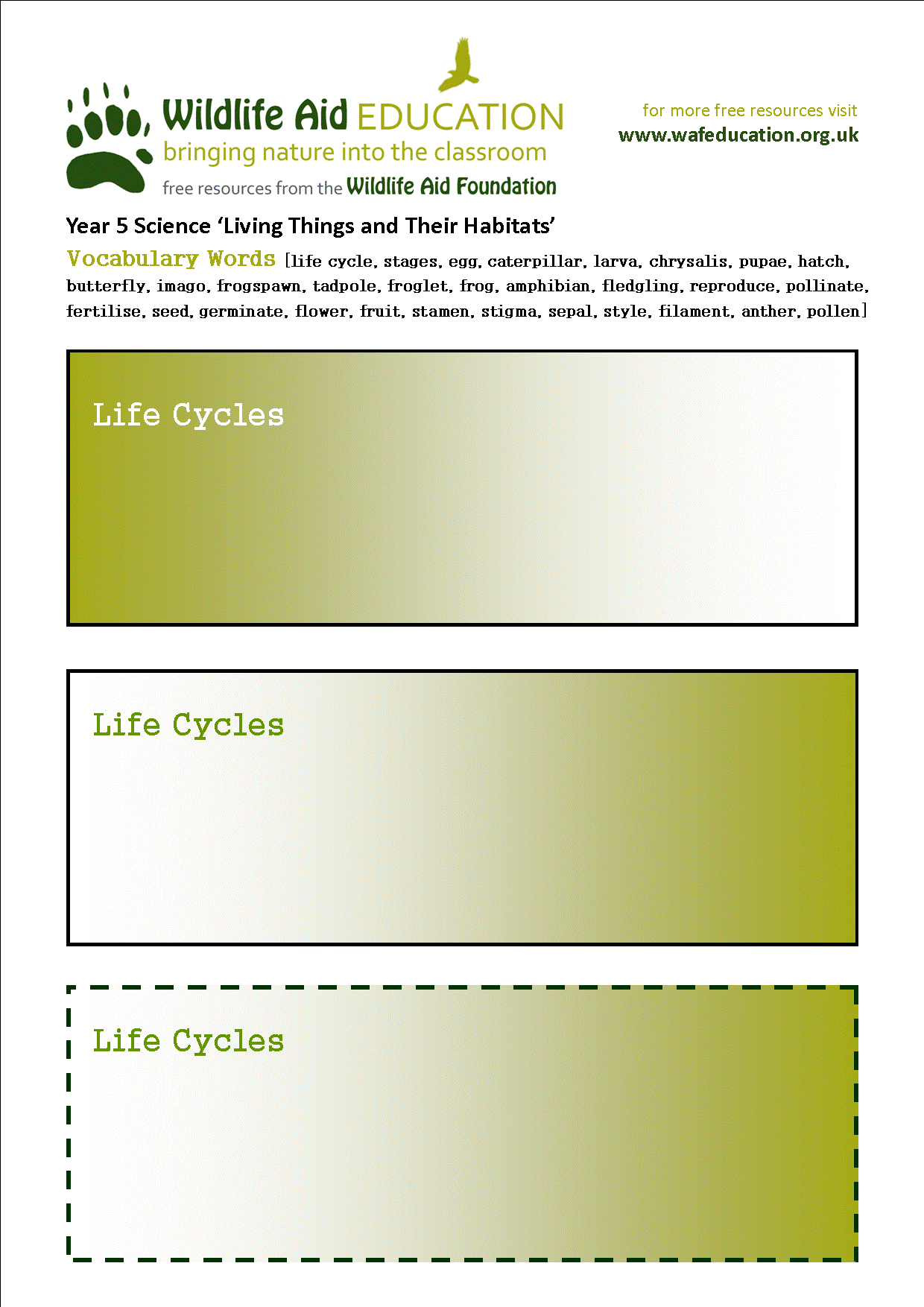




sound on/off
welcome to our website of completely free natural world resources for teachers, schools, parents and children
Learning Objectives
By the end of this lesson pupils should:
-
Understand the basic principle and mechanisms of sexual reproduction in plants
-
Understand the difference between sexual and asexual reproduction
Resources
-
Vocabulary cards
-
Powerpoint: 'plant diversity'
-
Cards of plant life cycle stages
-
Videoscribe: 'flowering plant life cycle'
-
Flower dissection sheet
-
Powerpoint: 'plant diversity with adaptation labels'
-
Videoscribe: 'sexual/asexual reproduction'
-
Powerpoint: 'spider plant reproduction'
You provide:
-
Flowers to dissect
-
Craft knives
-
Cutting boards
Vocabulary
reproduce, pollinate, fertilise, seed, germinate, flower, fruit, stamen, stigma, sepal, style, filament, anther, pollen
Starter activities
1. Teaching Point:
Recap life cycles from Lesson 1. Draw out principle of birth - juvenile - maturity - propagation - birth. Introduce principle that plants like animals reproduce to preserve the species.
2. Class Activity:
Watch Powerpoint: 'plant diversity' of plants with different structures. Introduce principle that their variety of colours/designs may all be geared to their process of reproduction.
Main activities
1. Group Activity:
Give out cards of plant life cycle stages. Children sequence pictures, correct where necessary.
2. Class Activity:
Watch Videoscribe: 'flowering plant life cycle'
3. Individual Activity:
Dissect flower, following flower dissection sheet. Display parts on sheet.
4. Class Activity:
Watch Powerpoint: 'plant diversity with adaptation labels'. Discuss their implications.
5. Teaching Point:
Introduce principle of asexual reproduction.
6. Class Activity:
Watch Videoscribe: 'sexual/asexual reproduction'
7. Class Activity:
Watch Powerpoint 'spider plant reproduction' and discuss.
NB As a longer term class project a spider plant growing activity could begin now and continue to unfold in the classroom.
Plenary activity
Q: What is the effect on flowers if there are fewer bees?
Assessment
......
Downloadable lesson plan and resources
Year 5 - 'Living Things and their Habitats'
Lesson 3: Reproduction in Plants' Full lesson plan (downloadable lesson plan and resources at foot of page)

Powerpoint: 'plant diversity'
click image to download

vocabulary cards for unit
click image to download
flower dissection sheet
click image to download






